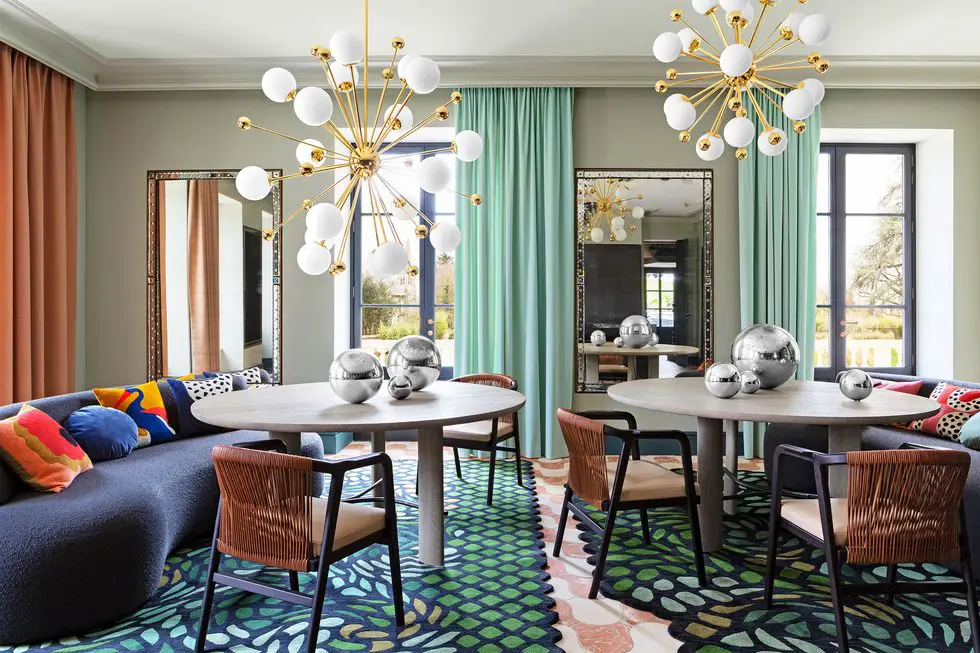Curtains are more than just decorative elements — they influence light, privacy, temperature, and even the perceived size of a room. Choosing the right curtains for each space in your home involves understanding functionality, fabric, style, and how each room’s purpose should guide your selection.
This article will walk you through how to choose the perfect curtains for every room in your home, helping you combine practicality with personal style.
1. Living Room: Balance Style and Light
The living room is usually one of the most visible and used spaces in a home, making curtain selection here especially important.
What to Consider:
- Light Control: Choose sheer or semi-sheer fabrics if you want to let in natural light while maintaining some privacy. For more control, use layered curtains (sheer + blackout).
- Style: Floor-length curtains create an elegant look. Try patterns or textures that coordinate with your furniture or rug.
- Rod Placement: Hang the curtain rod higher than the window frame and extend it wider than the window for a more dramatic and spacious effect.
Best Fabrics: Linen, cotton blends, or layered materials.
2. Bedroom: Prioritize Privacy and Sleep Quality
In the bedroom, curtains should provide a cozy, relaxing environment and help you sleep well.
What to Consider:
- Blackout Capability: Choose blackout curtains or add blackout liners to block morning sunlight and enhance rest.
- Noise Reduction: Heavier fabrics like velvet or thermal curtains can also reduce outside noise.
- Color and Ambiance: Go for calming colors like soft blues, grays, or earth tones. Avoid bright, energizing colors.
Best Fabrics: Blackout polyester, velvet, layered cotton.
3. Kitchen: Keep It Functional and Light
Curtains in the kitchen should be low-maintenance and practical. Since the space tends to get warm and humid, light and washable fabrics work best.
What to Consider:
- Length: Avoid long curtains that can drag or catch fire. Opt for café curtains (half-length) or valances.
- Cleanability: Choose machine-washable fabrics that resist stains and odors.
- Light: Keep the space airy and bright with sheer or light-filtering curtains.
Best Fabrics: Cotton, linen blends, polyester.
4. Bathroom: Moisture Matters
Bathrooms require special attention because of humidity and frequent water exposure.
What to Consider:
- Moisture-Resistant Material: Use synthetic materials that dry quickly and don’t mold.
- Privacy: Choose opaque fabrics or double-layered curtains if you have large windows.
- Ventilation: Ensure the fabric allows some airflow if the bathroom lacks a fan or window.
Best Fabrics: Polyester, nylon, PVC-treated fabric.
5. Dining Room: Formal and Inviting
Dining rooms often benefit from elegant, structured curtains that enhance the formality of the space.
What to Consider:
- Fabric Weight: Medium to heavy fabrics add a sense of luxury.
- Length and Drape: Floor-length curtains or puddled drapes (touching the floor) can enhance elegance.
- Lighting: Use lined curtains to adjust brightness while still allowing a soft glow.
Best Fabrics: Silk (faux or real), damask, jacquard, heavy linen.
6. Home Office: Light Control and Focus
A well-lit and quiet environment can boost productivity in a home office.
What to Consider:
- Glare Control: Use light-filtering curtains to reduce glare on screens without darkening the room too much.
- Professional Look: Stick to neutral or muted colors for a calming and focused environment.
- Layering: Add blinds or roller shades underneath for more control.
Best Fabrics: Light cotton, polyester, linen.
7. Kids’ Room: Safe and Fun
Curtains in children’s rooms need to be functional, safe, and playful.
What to Consider:
- Blackout Option: Just like in adult bedrooms, blackout curtains help regulate sleep patterns.
- Safety Features: Avoid long cords or heavy rods. Opt for cordless options and securely mounted hardware.
- Design: Choose fun prints or bright colors that can grow with the child’s tastes.
Best Fabrics: Polyester blends, blackout cotton, machine-washable materials.
General Tips for Curtain Shopping
- Measure First: Always measure window width and height. Add extra width for fullness (ideally 1.5 to 3 times the window width).
- Think About Rods and Hardware: Decorative rods can enhance the curtain’s look. Choose brackets that match the room’s style.
- Use Tiebacks or Holdbacks: They’re not just practical — they can add visual interest too.
- Color Match or Contrast: Curtains can either blend with the wall or provide contrast. Neutral curtains feel larger and softer; bold ones make a statement.
- Thermal and Insulated Options: In very cold or hot climates, insulated curtains can help regulate indoor temperatures.
Final Thought: Function Meets Style
Curtains are more than just window coverings. When chosen well, they frame your view, set the mood of the room, and enhance both comfort and design. Whether you prefer soft and romantic or bold and contemporary, there’s a curtain solution for every space in your home.
